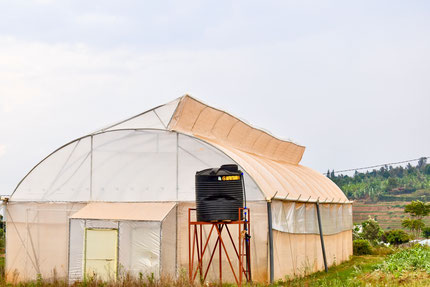Welcome
Sustainable Trade Rwanda Ltd (STR) produces and distributes vegetables sustainably in Rwanda.
Greenhouses

We grow green peppers, tomatoes and melons in greenhouses. Greenhouses allow for anti-cyclical production to the rainy periods. Thus having ripe produce available at times when it has to be imported otherwise. imported.
Just as important, the greenhouses significantly reduce the use of pesticides. The warm and humid climate of Rwanda is a real challenge for every vegetable grower. Massive pre- and post-harvest losses are unfortunately common. Our greenhouses have airlock gates where we disinfect and carefully screen materials and staff to minimise the entry of pests. The walls are dug deep into the ground and the vents are covered with fine mesh netting.
We are Wholesalers
We are wholesalers for vegetables and crops. We are always extremely pleased to be contacted to discuss our products and trading opportunities.

Quality matters

STR produced the highest quality. We create a uniform product. Our customers know what they are getting: high-quality vegetables and crops, ready for retail or further processing.
How we do
Philosophy

Sustainable Trade Rwanda is a profit oriented company that at the same time put into consideration the smallholder farmers’ development.
Invest now!
Invest in Sustainable Trade Rwanda Ltd and become part of the story. Get in contact with Steve. He will be most happy to discuss your and our needs regarding investments.
Enter your E-Mail address here and we will contact you.



